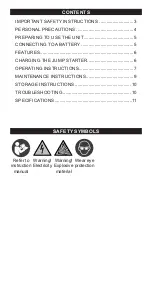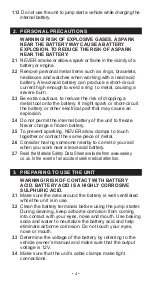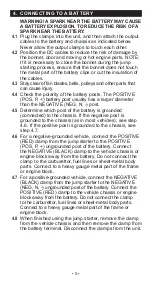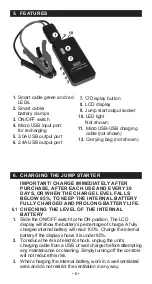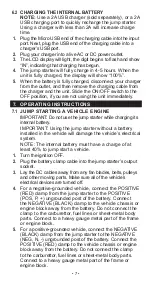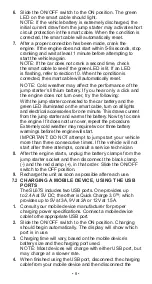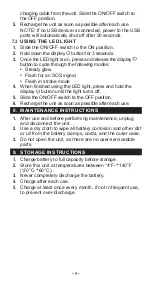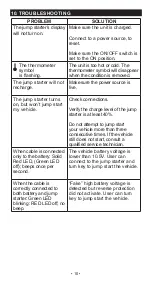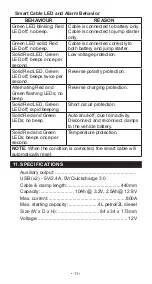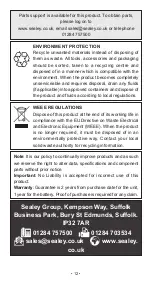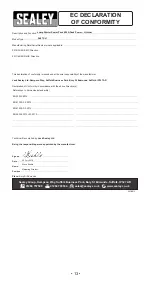
• 4 •
1.13
Do not use the unit to jump start a vehicle while charging the
internal battery.
2. PERSONAL PRECAUTIONS
WARNING! RISK OF EXPLOSIVE GASES. A SPARK
NEAR THE BATTERY MAY CAUSE A BATTERY
EXPLOSION. TO REDUCE THE RISK OF A SPARK
NEAR THE BATTERY:
2.1
NEVER smoke or allow a spark or flame in the vicinity of a
battery or engine.
2.2
Remove personal metal items such as rings, bracelets,
necklaces and watches when working with a lead-acid
battery. A lead-acid battery can produce a short-circuit
current high enough to weld a ring to metal, causing a
severe burn.
2.3
Be extra cautious, to reduce the risk of dropping a
metal tool onto the battery. It might spark or short-circuit
the battery or other electrical part that may cause an
explosion.
2.4
Do not permit the internal battery of the unit to freeze.
Never charge a frozen battery.
2.5
To prevent sparking, NEVER allow clamps to touch
together or contact the same piece of metal.
2.6
Consider having someone nearby to come to your aid
when you work near a lead-acid battery.
2.7
Read the Material Safety Data Sheet available from www.sealey.
co.uk. In the event of an accident seek medical attention.
3. PREPARING TO USE THE UNIT
WARNING! RISK OF CONTACT WITH BATTERY
ACID. BATTERY ACID IS A HIGHLY CORROSIVE
SULPHURIC ACID.
3.1
Make sure the area around the battery is well ventilated
while the unit is in use.
3.2
Clean the battery terminals before using the jump starter.
During cleaning, keep airborne corrosion from coming
into contact with your eyes, nose and mouth. Use baking
soda and water to neutralize the battery acid and help
eliminate airborne corrosion. Do not touch your eyes,
nose or mouth.
3.3
Determine the voltage of the battery by referring to the
vehicle owner’s manual and make sure that the output
voltage is 12V.
3.4
Make sure that the unit’s cable clamps make tight
connections.


